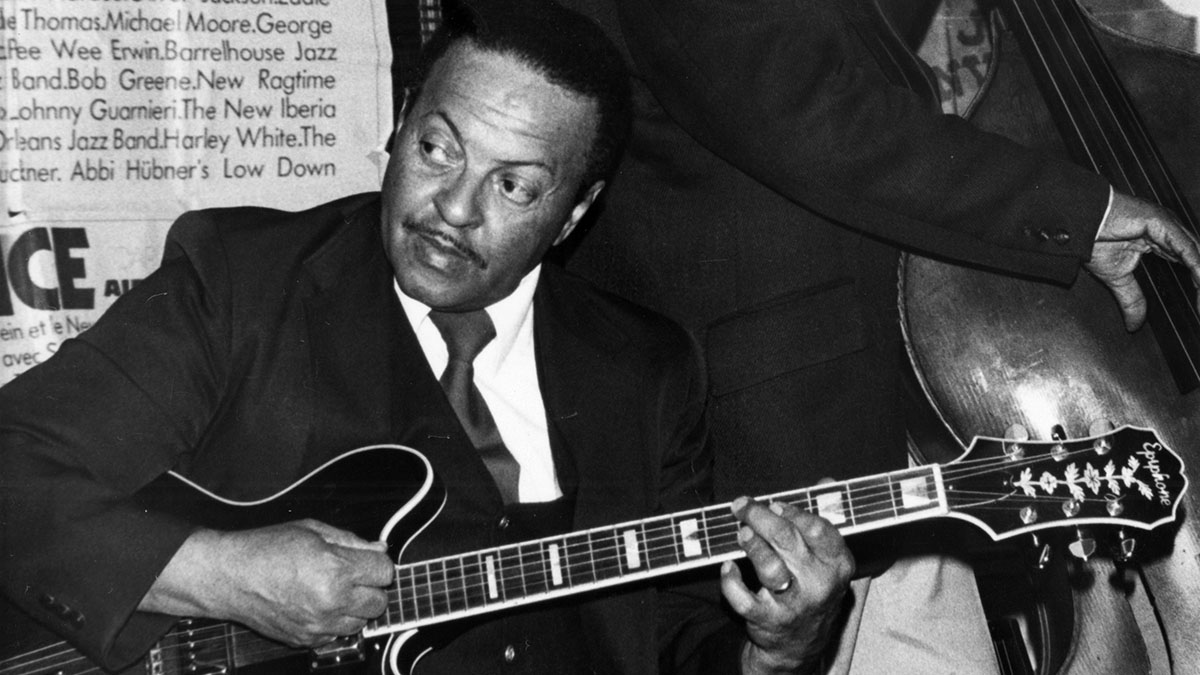Make your blues swing with this guide to Honky Tonk hero Billy Butler’s techniques
A hero to the great Danny Gatton, Billy Butler was a trailblazing player, and this lesson into his jazzy blues style will underpin your technique and improvisational sensibility

Billy Butler was a wonderful guitarist with a beautiful tone, inventive lines and impressive stylistic range that included authentic blues, swinging jazz, genre defining R&B chops and much more besides.
Probably most famous for his work in the mid ’50s with pianist and organist Bill Doggett, and more specifically for the 1956 instrumental that he co-wrote with Doggett, Honky Tonk, Butler maintained a steady career as session musician, sideman and leader in his own right.
Butler’s playing swung like crazy and was rooted in the blues, although the influence of Charlie Christian was also clearly evident. Billy’s lines were always super clear, with a real sense of both melodic and rhythmic intent. This direct and at times simple melodic playing can be deceptively difficult to deliver with authority, as every note really counts and any rhythmic anomaly or glitch in the delivery stands out a mile.
Needless to say, Butler made everything sound effortless and the musical ideas that he conjured up and delivered expertly, always sounded like they originated directly from his musical imagination, and not from any kind of memorised finger pattern or shape.
The musical examples that follow explore two sides to Billy’s impressive and musically compelling style. First off, we’ll explore his shuffle blues phrasing, beginning with three examples taken directly from his improvisational vocabulary. You’ll notice an abundance of triplet rhythms here, consistent with the underlying pulse of the rhythm section.
We follow this with three similar ideas found in the wider world of blues from Duke Robillard, Kenny Wayne Shepherd and Jimmie Vaughan. Next up, we contextualise these ideas with a cohesive solo based around the same shuffle groove and around a complete chorus of a 12-bar blues in the key of G.
For the next section we’ll look at Billy’s jazzy swing playing, again with a trio of phrases although this time we’ve upped the tempo and these ideas are delivered over a stylistically appropriate I-VI-II-V vamp, this time in the key of C. These lines are followed by three contrasting phrases courtesy of Django Reinhardt, Oscar Moore (Nat King Cole) and Danny Gatton (Gene Vincent).
All the latest guitar news, interviews, lessons, reviews, deals and more, direct to your inbox!
We’ve mentioned many times in these articles the immense musical benefits that come from transcribing, and we’d urge you to go directly to the music for each and every artist that we cover here. If you’ve shied away from this activity, the clarity and directness of Billy’s playing might be the just the thing to give your confidence with transcription a massive boost, and you’d learn a huge amount of valuable musical information along the way.
Start by attempting to pick up just a bar or two at first sitting, rather like learning a language one word at at time. Before you know it, you be able to decipher longer and more complex musical phrases in real time, just by listening alone. Like all worthwhile skills, this takes time, patience and perseverance so start small and learn to appreciate it’s the journey that counts, not just the destination. And, as always, enjoy.
Technique focus: double-stops and chord fragments
You can add another level of interest to your soloing style by incorporating small fragments of chords and the occasional double-stop here and there as you wish. This’ll give your phrasing a more three-dimensional sense, but remember be careful to not overdo the level of gain.
One of the benefits to choosing a completely clean or very slightly driven guitar tone is the opportunity to play multiple notes at once. One way to approach adding chord fragments is to divide your playing into two distinct parts, one devoted to ’soloing’, articulating predominantly single -note lines, and one doing the ‘comping’.
Here we essentially punctuate our melodic statements with chordal figures placed rhythmically in the gaps, almost taking on the role of two players
Here we essentially punctuate our melodic statements with chordal figures placed rhythmically in the gaps, almost taking on the role of two players or rather like the two-handed approach of a piano player.
A second approach is to consider our part as a whole, where lines can be delivered as single notes but then also these be executed in two, three or four-part harmony. Here, it’s good to evaluate each melodic choice intervallically against the underlying harmony, making sure we have an arsenal of available chord forms for each chord type and from each and every chord tone, so that you can drop an appropriate chord fragment underneath your melody note to add impact on demand. Try it over our backing.
Get the tone
Billy favoured Gibson or Epiphone archtops, and occasionally a Gibson Les Paul Recording with low impedance pickups. We’re after a warm, clean tone so select the neck pickup, make sure your delivery is articulate, picking more towards the neck for the jazzier sounding examples. If you’re using single-coils, take the treble down at the guitar amp, but don’t reduce the highs too much.
Example 1. Butler’s blues
Let’s begin with a set of Butler-inspired blues lines in the key of G, against various points from within a 12-bar. 1a) is taken from the first four bars of the sequence and uses a small chord fragment idea that follows the transition of B (Maj 3rd of G) to Bb (b7th of C7).
In 1b) we transpose the idea to follow the V7 (D7), IV7 (C7) and I7 (G7) changes. For 1c) we map out the movement between G7 (I7) and C7 (IV7), while maintaining the same consistent fretboard location.
Example 2. Blues ideas
Our initial Duke Robillard idea explores bluesy single notes and double-stops over the first four bars from a 12-bar in G. There is a real Hendrix-meets-SRV vibe to our Kenny Wayne Shepherd idea in 2b), against the move between V7 (D7) via IV7 (C7) towards I7 (G7).
We end with the melodic/riff based example, 2c), courtesy of the mighty Jimmie Vaughan. Take note again of the connection here between the note B against G7 (Maj3), falling to Bb against C7 (b7th).
John is Head of Guitar at BIMM London and a visiting lecturer for the University of West London (London College of Music) and Chester University. He's performed with artists including Billy Cobham (Miles Davis), John Williams, Frank Gambale (Chick Corea) and Carl Verheyen (Supertramp), and toured the world with John Jorgenson and Carl Palmer.

